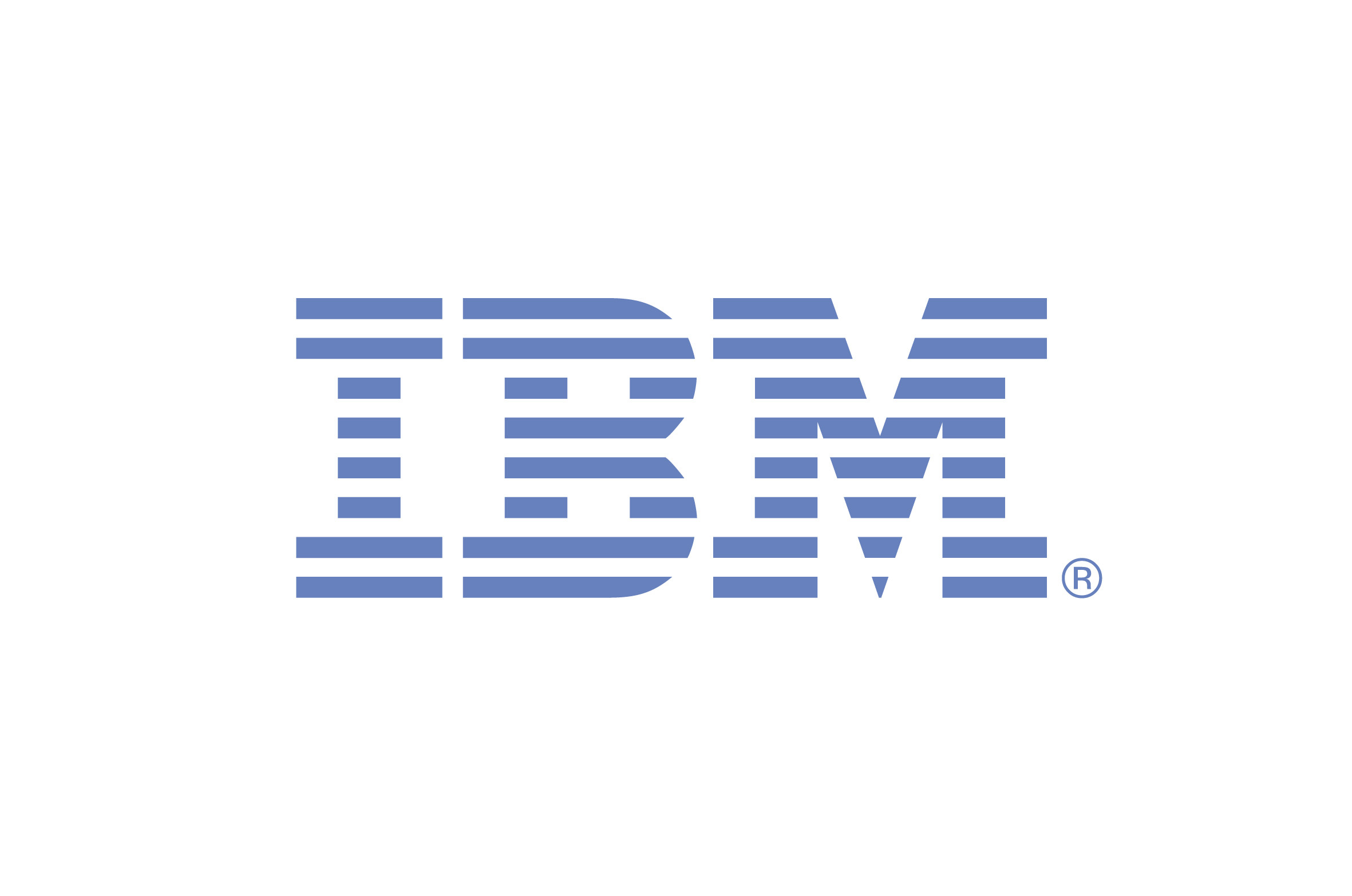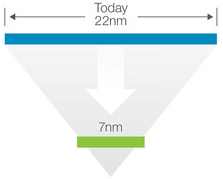IBM Beats Intel To 7nm Process Thanks To Silicon-Germanium Transistors, EUV Lithography
An IBM-led consortium that also includes Samsung and Global Foundries, managed to create the world's first working version of a 7nm chip, which promises to be twice as dense as the next-generation 10nm chips, and even denser than today's 14nm chips. IBM claimed that this breakthrough should enable the building of chips that have more than 20 billion transistors.
Intel, which has always been the one to move to a smaller process node technology over the past few decades, has struggled to ship 14nm chips on time, and industry experts believe that the transition to smaller silicon transistors will only become harder from now on.
However, IBM and its partners managed to create working samples of chips that are created with 7nm transistors. They achieved this by moving away from pure silicon to Silicon-Germanium alloy for making transistors. The new material has higher electron mobility and makes it possible to have faster switching transistors and lower power requirements. To reach these small geometries, the company used self-aligned quadruple patterning (SAQR) and extreme ultraviolet (EUV) lithography.
The use of EUV lithography in a manufacturing plant today is almost as innovative as making 7nm SiGe-based transistors. Chip companies have been researching EUV lithography for years, but it seems IBM and its partners will be the first to start using it in production.
Currently, state of the art lithography has a wavelength that is 193nm wide, which makes it quite difficult to design chips with much smaller transistors. The EUV lithography, on the other hand, has a wavelength of only 13.5nm. EUV lithography is likely still much more expensive to use because it must operate for longer periods of time, and it's sensitive to the smallest vibrations when designing the chips. However, IBM must hope it can reduce the cost by the time 7nm chips are ready to be manufactured in a few years.
IBM is expecting to go beyond 7nm by the end of the decade, but it also recognizes that will be a much harder task:
"Scaling to 7nm and below is a terrific challenge, calling for deep physics competencies in processing nano materials affinities and characteristics. IBM is one of a very few companies who has repeatedly demonstrated this level of science and engineering expertise," said Richard Doherty, technology research director, The Envisioneering Group.
Get Tom's Hardware's best news and in-depth reviews, straight to your inbox.
The company believes that new materials, such as carbon nanotubes or graphene, will be necessary to go beyond 7nm. The alternative could be to start developing other types of computers, such as quantum, cognitive or neuromorphic computers.
Although IBM seems to be a pioneer in 7nm chips, the company has already given away its foundry business to Global Foundries. However, IBM will license the 7nm 3rd generation FinFET process technology to Global Foundries, and likely Samsung as well, which should help IBM make enough revenue to continue its research into smaller process nodes and other related technologies.
The first 7nm chips from IBM's partners might not arrive at least until 2018. However, with Intel's 10nm process likely slipping into 2017 and further delaying its own 7nm process, it's possible the first 7nm chips to ship on the market won't be from Intel this time around.
Follow us @tomshardware, on Facebook and on Google+.
Lucian Armasu is a Contributing Writer for Tom's Hardware US. He covers software news and the issues surrounding privacy and security.
-
Onus Hmmm, I wonder how well they will tolerate heat; pure germanium is subject to thermal runaway.Reply
7nm makes me wonder if someone sneezing in the next room might knock the equipment out of alignment...
-
shafe88 Would love to see an AMD apu built 7nm process. With 7nm process they'd be able reduce power consumption while increasing graphics performance and increasing the number of cores giving Intel a run for their money. How cool would it be to have 6 and 8 core apu's for desktops and mobile apu's that use half the power of current apu's resulting in longer battery life and cooler running.Reply -
jimmysmitty While this is interesting the viability is what we have to wonder about. Considering it is a first step it is probably 7nm SRAM, much like Intels 10nm was last seen to be. That is a great step but it doesn't tell us anything more than IBM has 7nm SRAM cells that act very differently to a massively more complex CPU.Reply
I am wanting to know how they are handling, or how their new materials will handle, the core degradation issue Intel was talking about as the smaller nodes will suffer from more wear/tear due to the smaller traces. Maybe SiGe will handle it better, I know even Intel was looking into new materials beyond 10nm and SiGe was one of them.
I guess it all depends on when it launches and how well it performs and what Intels answer will be. I imagine Intel is already working 7nm and looking at other materials as well. -
InvalidError Demonstrating working transistors on a new process is one thing, making billions of transistors coexist on that process to produce a chip is another.Reply
Intel demonstrated ALUs working at 8-10GHz 10-12 years ago yet we still do not have practical CPUs operating at more than 5GHz today.
Not all demonstrations turn into practical and economically viable processes. -
extide I wouldn't say they "beat" Intel just quite yet... I mean who knows, Intel may have plenty of working 7nm parts already. Anyways, for me the real 'winner' is the first one to have mass produced parts that are available for sale.Reply -
jimmysmitty Reply16216296 said:Demonstrating working transistors on a new process is one thing, making billions of transistors coexist on that process to produce a chip is another.
Intel demonstrated ALUs working at 8-10GHz 10-12 years ago yet we still do not have practical CPUs operating at more than 5GHz today.
Not all demonstrations turn into practical and economically viable processes.
Pretty much. -
gangrel I think the economic viability is a big issue. Sounds like yields per hour, per etching station, will be low...and the cost of each station, high. Everything is harder...the wafer consistency presumably has to be that much better, for example...because the tolerances for irregularities are that much tighter.Reply
And the other question is, is this even the right path to follow? Are there other solution paths that will be better for the medium term? There are parallels with hard drives; rather than increase platter density, they added more platters, and then they developed RAID. -
usertests "Would love to see an AMD apu built 7nm process. With 7nm process they'd be able reduce power consumption while increasing graphics performance and increasing the number of cores giving Intel a run for their money."Reply
AMD needs to get to 16/14nm first. You think Intel will just sit back? Everyone is waiting for EUV. -
gangrel AMD's chips have had higher, to notably higher, power requirements compared to Intel. The smaller you go, the more this gets to be a problem. I think they're in a significantly inferior position to move down to this size. (That is, beyond the fact that they've been a generation or more behind Intel with regard to fabrication techniques.)Reply

